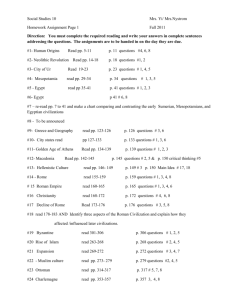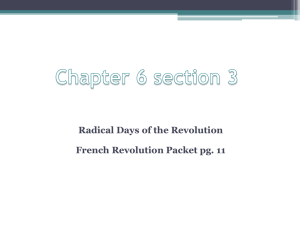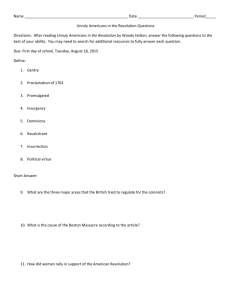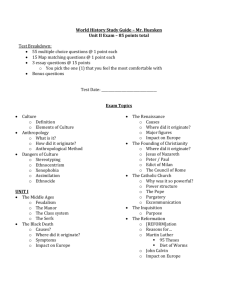French Revolution Lesson
advertisement
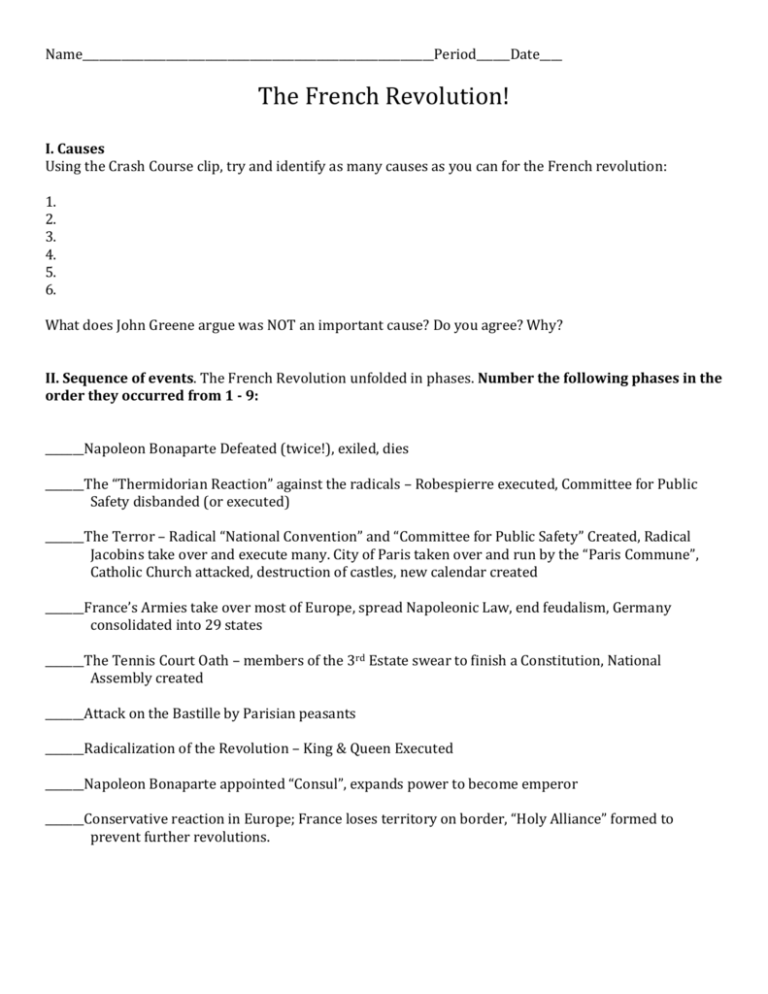
Name_______________________________________________________________Period______Date____ The French Revolution! I. Causes Using the Crash Course clip, try and identify as many causes as you can for the French revolution: 1. 2. 3. 4. 5. 6. What does John Greene argue was NOT an important cause? Do you agree? Why? II. Sequence of events. The French Revolution unfolded in phases. Number the following phases in the order they occurred from 1 - 9: _______Napoleon Bonaparte Defeated (twice!), exiled, dies _______The “Thermidorian Reaction” against the radicals – Robespierre executed, Committee for Public Safety disbanded (or executed) _______The Terror – Radical “National Convention” and “Committee for Public Safety” Created, Radical Jacobins take over and execute many. City of Paris taken over and run by the “Paris Commune”, Catholic Church attacked, destruction of castles, new calendar created _______France’s Armies take over most of Europe, spread Napoleonic Law, end feudalism, Germany consolidated into 29 states _______The Tennis Court Oath – members of the 3rd Estate swear to finish a Constitution, National Assembly created _______Attack on the Bastille by Parisian peasants _______Radicalization of the Revolution – King & Queen Executed _______Napoleon Bonaparte appointed “Consul”, expands power to become emperor _______Conservative reaction in Europe; France loses territory on border, “Holy Alliance” formed to prevent further revolutions. III. Effects The Terror! The Terror! Choose four of the documents in the set and use them to prove a consequence of The Terror in a body paragraph. Start with a clear claim about a consequence then use the four documents to prove it. Remember: Attribute-Infer-Cite-Point of View-Explanation of impact of POV on the document. IV. Evaluation of Consequences. (effects) Based on a lesson by Andy Aiken of Boulder, CO. Alongside each of the following consequences of the French Revolution, label each as “short term” (ST) or “long term” (LT), and circle the most important consequence in each category. Political Replaced absolutism with republican (representative democratic) government: from “subjects” to “citizens”; ended belief in divine-right monarchy Republican rhetoric, revolutionary actions terrified European monarchs, inspired European lower and middle classes. Catalyst for Haitian Revolution (1789-1904), world’s first successful slave revolt Europe’s first popular dictatorship under Napoleon. Nationalism in France and conquered European states in Napoleonic Wars led move to constitutional monarchies in Europe (including France) Conservative backlash to French Revolution, and liberal, socialist, and radical reactions to conservatism Inspired later revolutions (or wars of independence) in Europe, South America, and other regions of the world (e.g. Haitian revolution) Economic Legally ended Feudalism and feudal dues/taxes Land reform - many peasants acquired land Price controls on break and other commodities Catholic Church’s land and wealth reduced Social Sped up process of increased class mobility in France (lower classes could become Middle Class, etc.) Empowered some women as political leaders Forced Catholic priests to swear loyalty to the Republic and marry Ended slavery in the French colonies (after Haitian revolution) Rise of the power of the Middle Class (bourgeoisie) Religious freedom in France Traditional privileges of the nobles (aristocracy) ended Reinforced and continued Enlightenment rational and non-religious intellectual culture. V. In-Depth Study: Rights of Man and Citizen versus Rights of Women Using copies of the Declaration of Rights of Man and of the Citizen and the Declaration of the Rights of Women and the Female Citizen compare each section in the space below. On the right note what may have been happening in French (or general European) society to warrant De Gouge’s answer to each article in the DRMC. Article 1 2 3 4 5 What it means in summary How de Gouges modified it Why de Gouges might have modified it 6 7 8 9 10 11 12 13 14 15 16 17

